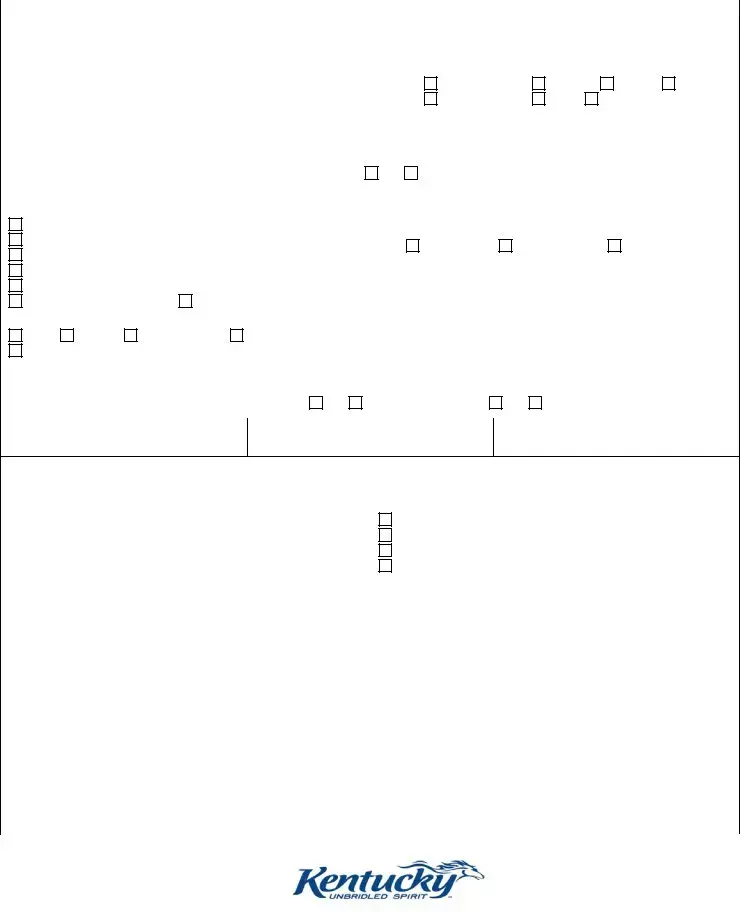The Kentucky MAP 351 form, used for Medicaid Waiver Assessment, resembles several other types of health and human services documents, focusing on gathering detailed information to assist individuals in accessing needed services and supports. Each document serves a specific purpose in the assessment and provision of care, highlighting the unique and overlapping requirements across various systems and processes. Some documents similar to the MAP 351 form include applications for other state-specific Medicaid Waiver programs, the Individualized Service Plan (ISP), the Comprehensive Needs Assessment (CNA), the Individual Education Plan (IEP), the Person-Centered Plan (PCP), the Functional Needs Assessment, the Health Risk Screening Tool (HRST), the Prior Authorization Request Form for Medicaid Services, the Community-Based Services Application, and the Disability Determination Services Application. These documents collectively ensure that individuals receive personalized, coordinated care tailored to their specific health, educational, and social needs.
Applications for other state-specific Medicaid Waiver programs share similarities with the Kentucky MAP 351 form, as they are designed to collect comprehensive information about an individual's health condition, living situation, and care needs. Like the MAP 351 form, these applications help to determine eligibility for programs that offer alternatives to institutional care, enabling individuals to receive services in their homes or communities.
The Individualized Service Plan (ISP) is another document similar to the MAP 351 form, focusing on detailing the specific services, supports, and interventions a person will receive to meet their unique needs. ISPs are developed collaboratively with the person receiving services and often include goals, specific service providers, and metrics for assessing progress, mirroring the personalized nature of the information collected in the MAP 351 form.
Similar to the MAP 351 form, the Comprehensive Needs Assessment (CNA) is used to evaluate an individual’s medical, psychological, and social needs to develop a coordinated care plan. The CNA is comprehensive in scope, capturing detailed information that informs the care and support services tailored to the individual, reflecting the MAP 351’s purpose of ensuring appropriate waiver services are provided.
The Individual Education Plan (IEP) shares goals similar to those of the MAP 351 form but within the educational context. Like the MAP 351 form, IEPs assess the unique needs of individuals (students with disabilities, in this case) and outline specific services, accommodations, and educational goals to support their learning and development.
Person-Centered Plans (PCP) are akin to the MAP 351 form in their approach to care planning, focusing on the preferences, goals, and abilities of the individual. Both documents emphasize tailoring services to fit the unique needs and desires of the person, ensuring they lead in the decision-making process regarding their care and support.
The Functional Needs Assessment is a tool used, much like the MAP 351 form, to determine an individual’s abilities and support requirements in daily living activities. It helps in making informed decisions about the type and extent of assistance an individual requires to live as independently as possible.
The Health Risk Screening Tool (HRST) shares objectives with the MAP 351 form by identifying health risks and care needs to prevent complications and promote well-being. Though the HRST may be more narrowly focused on health risks, it complements the MAP 351’s broader assessment of an individual’s condition and care requirements.
Prior Authorization Request Forms for Medicaid Services are utilized to request and justify the need for specific services or equipment, similar to how the MAP 351 form identifies and validates the need for waiver services. Both documents facilitate access to necessary, Medicaid-funded supports tailored to individual needs.
Community-Based Services Applications, like the MAP 351, solicit detailed personal, health, and functional information to determine eligibility and need for non-institutional care options. They play a crucial role in helping individuals access supportive services within their communities.
The Disability Determination Services Application, while primarily focused on determining eligibility for disability benefits, collects extensive information on an individual’s health condition and limitations, paralleling the MAP 351 form's assessment of needs to align services and supports with the individual’s condition and capabilities.










